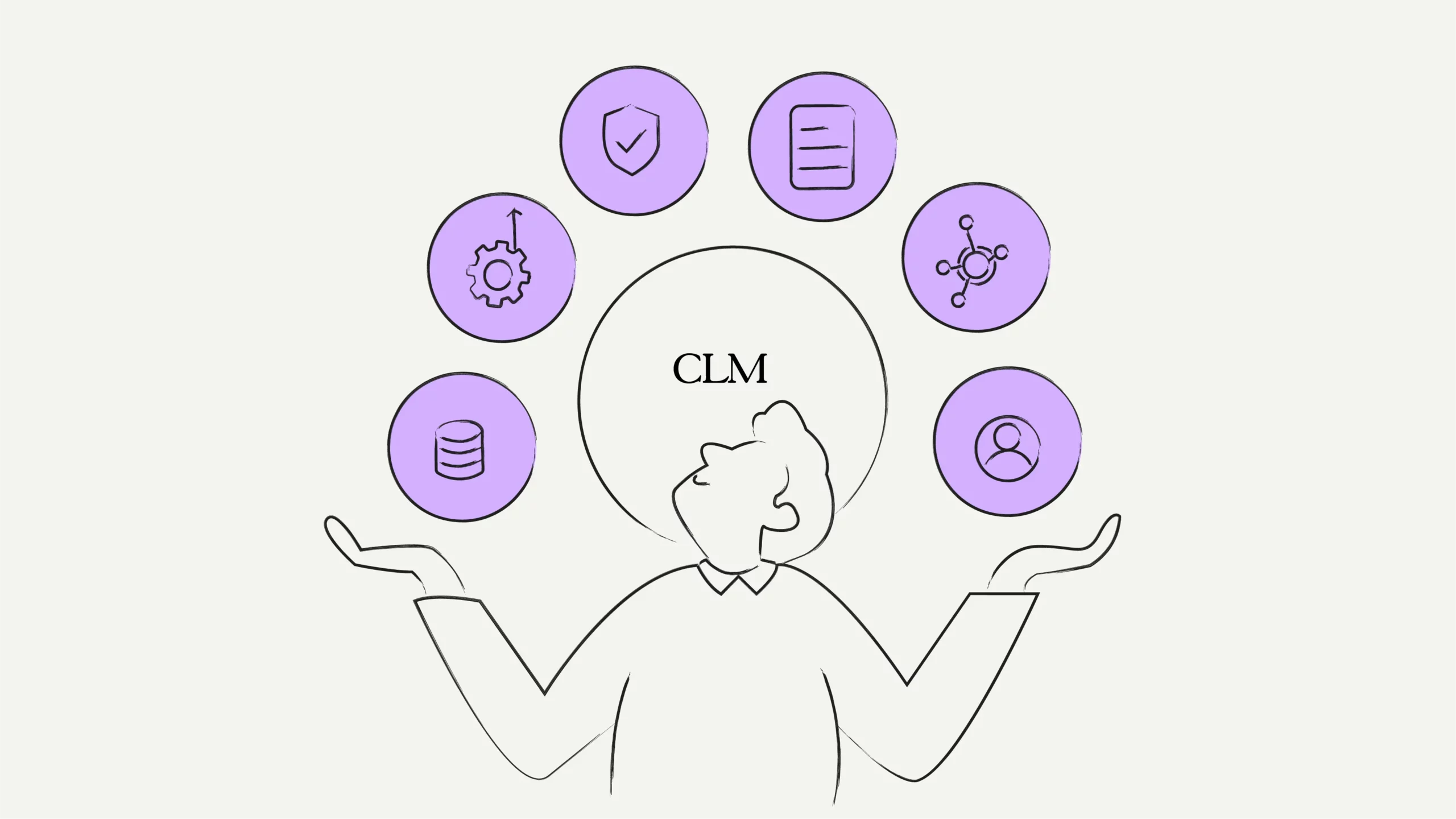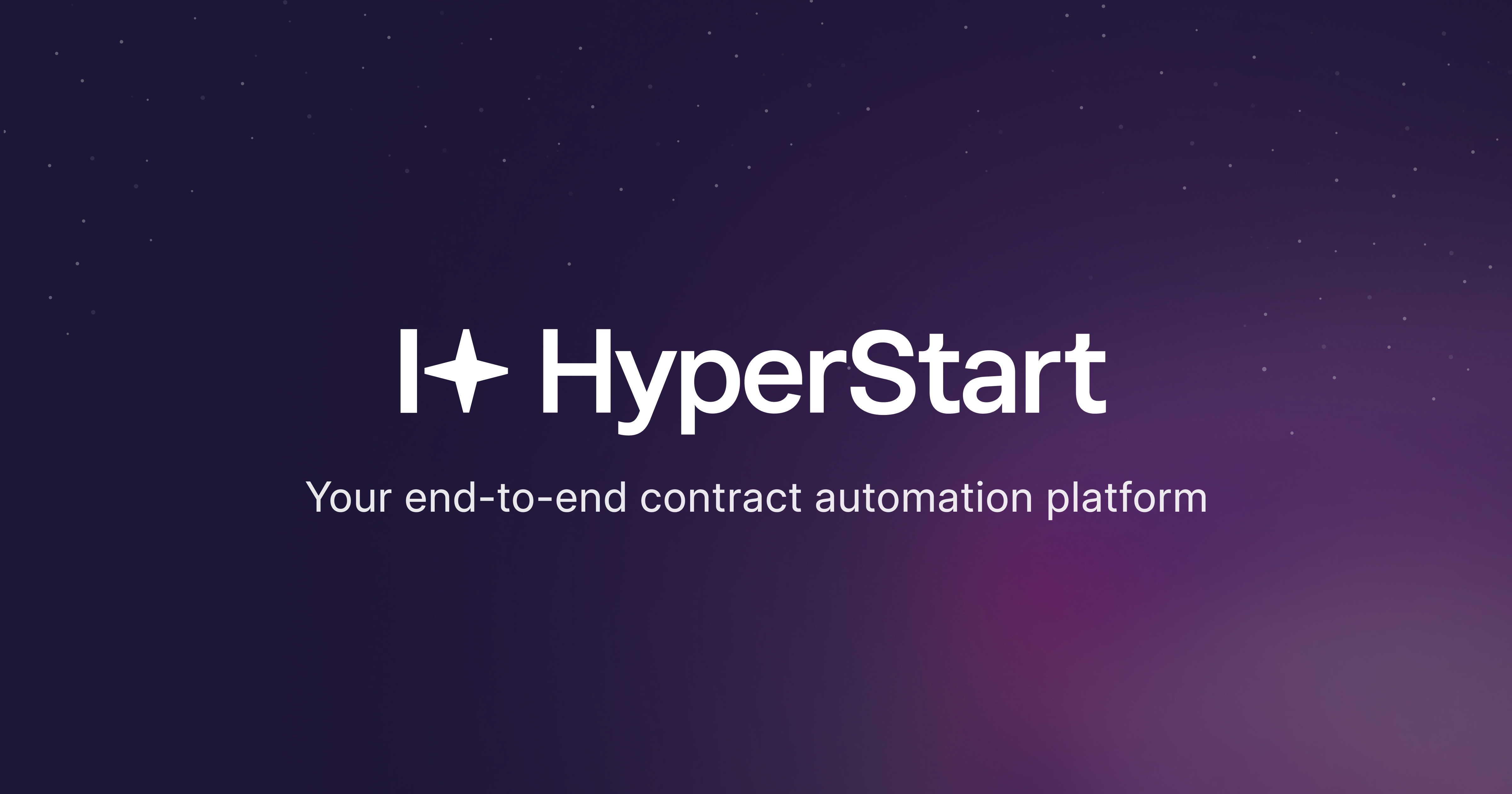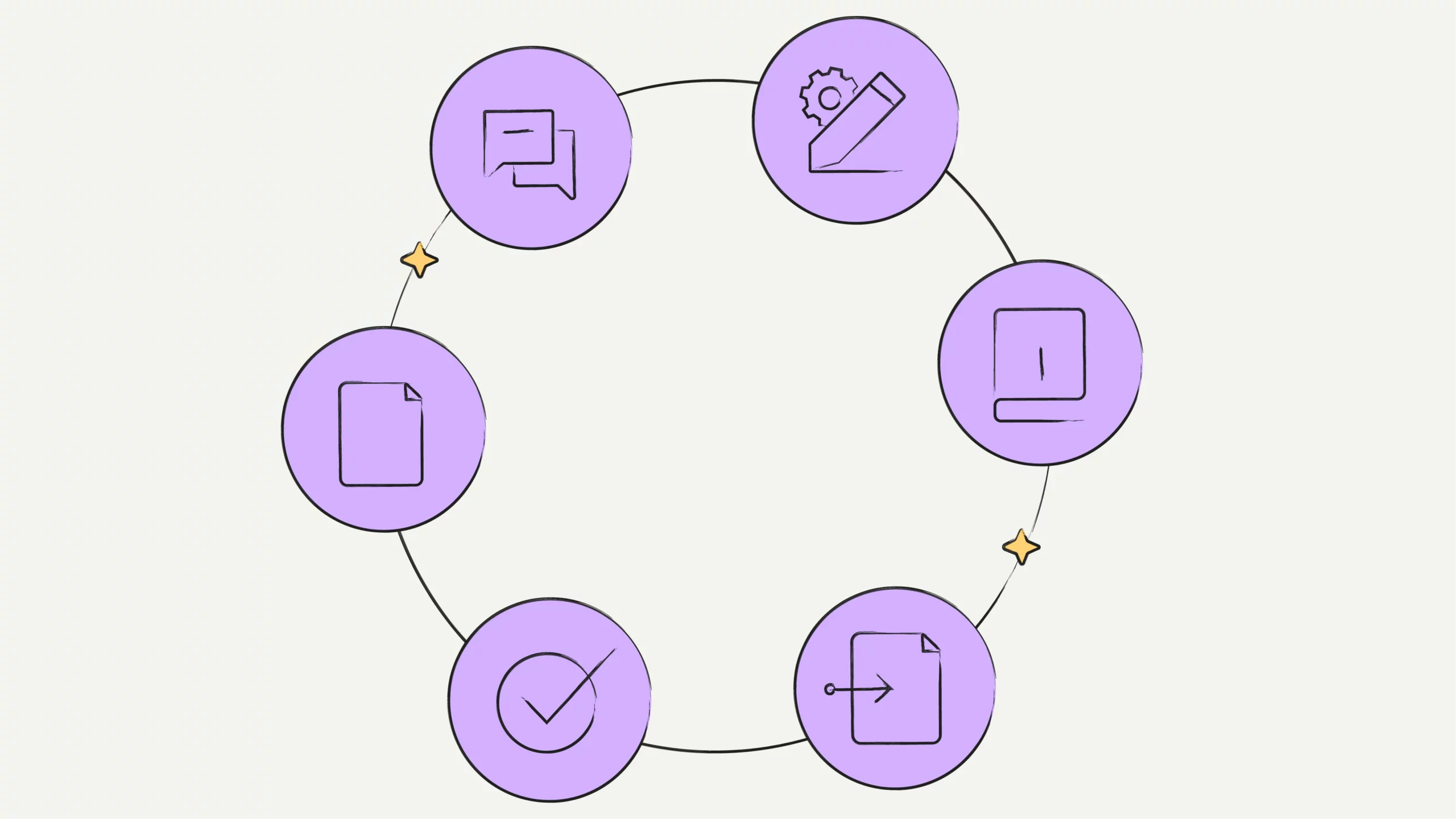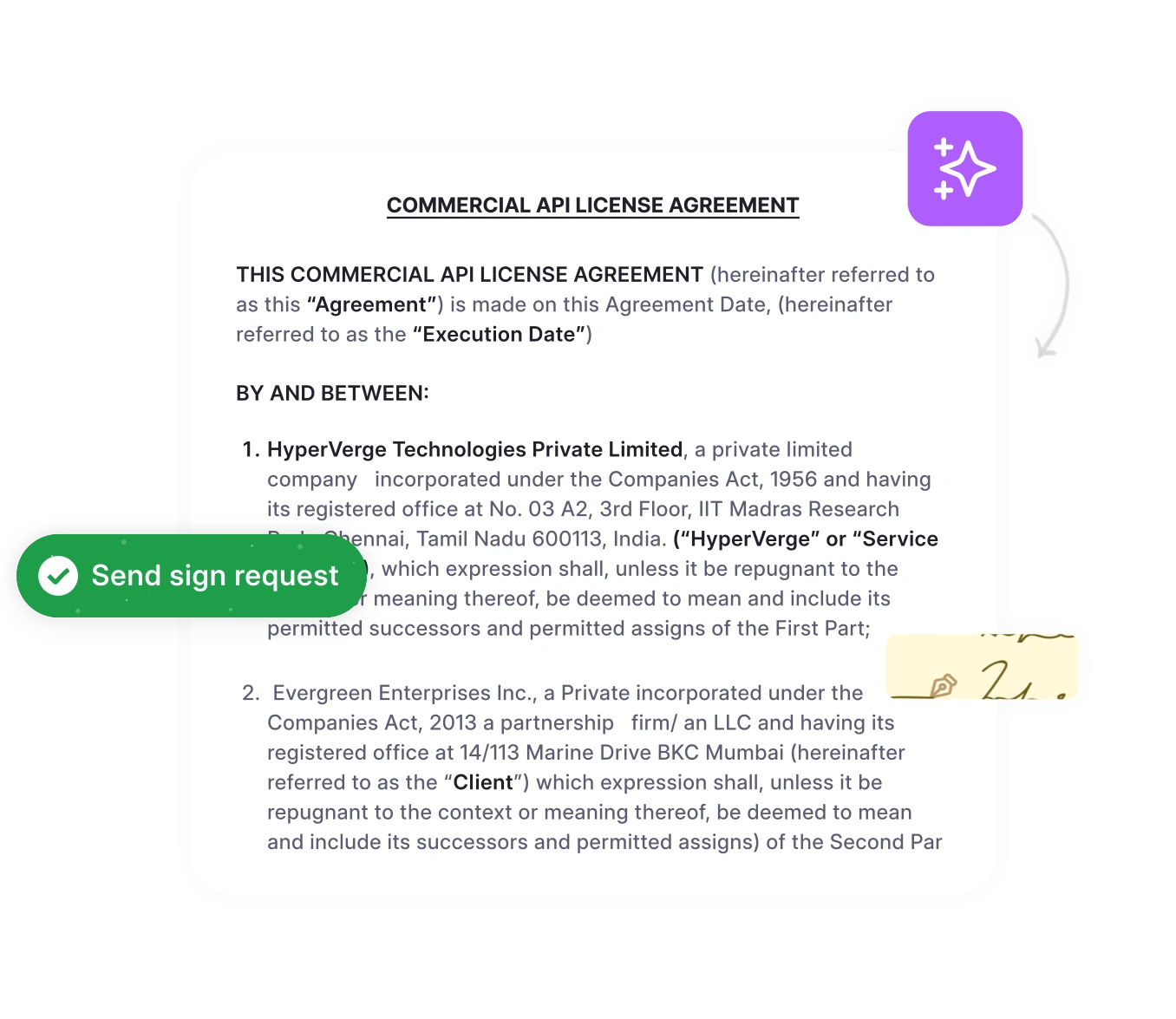Contracts are at the heart of almost every deal and partnership. But keeping track of all those contracts can be a real challenge.
Many organizations battle missed renewal dates, inconsistent clauses, and cumbersome processes that slow everything down. These issues don’t just create chaos. They can cost you money and put you at risk for compliance violations.
Contract lifecycle management (CLM) offers a solution by transforming how contracts are created, negotiated, signed, and renewed.
Through the adoption of CLM, organizations can automate routine tasks, standardize contract language, and implement proactive monitoring of key dates and terms. This means teams can focus on strategic activities instead of getting bogged down by administrative details, all while reducing the likelihood of costly mistakes.
In this blog, we’ll explore the benefits of contract lifecycle management and how it can help you improve your contract processes.
Let’s get started.
What is contract lifecycle management?
Contract lifecycle management (CLM) is a structured approach to managing business contracts throughout all stages of their lifecycle. This lifecycle includes creation, negotiation, approval, compliance monitoring, and renewal.
With dedicated AI-powered contract management software, companies can automate, organize, and monitor these stages, ensuring contracts are not just filed away but actively managed for maximum value.
How CLM connects business functions
CLM is a unifying force for various organizational departments, fostering collaboration and alignment. Consider the following key functions:
Legal: The legal team uses CLM to track contracts and ensure compliance with the rules. Because everything is in one place, they can easily find and review contracts. Plus, CLM takes care of boring tasks like writing contracts and getting approvals so the legal team can focus on important work.
Finance: For the finance team, CLM helps them see what the company needs to pay and what it will earn. It makes collecting and checking contract information easier, which helps with budgeting and planning. This way, they can find ways to save money, too.
Procurement: CLM simplifies the procurement process by using standard contract templates and helping with vendor onboarding. This helps them negotiate better deals and monitor supplier performance so they can spot problems early.
Sales: In sales, CLM is helpful. It gives sales teams quick access to contract templates, which speeds up the sales process and ensures everyone understands the contract terms. It also helps them see how well they’re doing and find opportunities to sell more to customers.
8 key benefits of contract lifecycle management
Here are the core contract lifecycle management benefits and why every organization should consider them an essential part of its business strategy.
1. Drives efficiency while reducing costs
CLM systems automate the entire contract lifecycle from drafting and approving to storing and tracking contracts, dramatically reducing the time spent on administrative tasks and operational costs. In fact, studies from World Commerce & Contracting show that manually managing a contract can cost upwards of $6,900. CLM systems automate these tasks, reducing these costs and freeing up valuable time for your team.
Automated workflows: CLM systems set up automated workflows that route contracts to the right individuals for review and approval, reducing bottlenecks and eliminating follow-up emails.
Pre-approved templates: These allow for quicker contract generation and consistency across agreements, minimizing the need for legal intervention in every contract.
Reduced administrative burden: By automating manual tasks, employees can focus on higher-value activities, reducing operational costs and improving productivity.
2. Ensures compliance and minimizes risks
Contracts play a crucial role in ensuring legal and regulatory compliance. A single compliance error can lead to fines, reputational damage, or litigation. CLM systems help companies stay compliant by enforcing standardized clauses, managing approvals, and tracking regulatory requirements.
Standardized clauses: Pre-approved contract language minimizes the risk of inconsistent terms that could lead to compliance issues.
Audit trails: Every action taken on a contract is logged, creating a transparent and traceable record that aids in compliance and accountability.
Automated alerts: CLM systems send reminders for key compliance deadlines, renewals, and obligations, helping organizations avoid penalties and meet regulatory requirements.
With CLM, companies can be more confident in their compliance status, reducing legal risks and improving governance.
3. Centralizes storage for easy contract access
Contracts are often scattered across departments and stored in various formats, making them difficult to find when needed. CLM systems centralize all contracts in a single, searchable repository, making accessing, organizing, and managing every document easy.
Easy access: A centralized repository allows users to search for and retrieve contracts quickly, whether by client name, date, or terms.
Version control: CLM systems ensure everyone works from the latest version, reducing the risk of errors caused by outdated information.
Improved collaboration: Cross-departmental access enables different teams (legal, sales, finance) to work together, fostering better alignment.
Centralized contract storage enables teams to manage contracts efficiently by providing easy access to essential information at their fingertips, bringing order and clarity to the contracting process.
4. Accelerated sales cycles and revenue recognition
The sales process is often hindered by delays in negotiations, approvals, and signatures, which can create significant bottlenecks. CLM solutions speed up the process, empowering sales teams to close deals faster and recognize revenue sooner.
E-signature integration: E-signatures allow for faster contract execution, eliminating the need for printing, signing, scanning, and mailing.
Pre-approved templates for sales contracts: Sales reps can use legally approved templates, reducing the time spent waiting for legal departments to review them.
CRM integration: Many CLM systems integrate with customer relationship management (CRM) systems, allowing sales teams to track contract status, renewal dates, and other key details.
By shortening the sales cycle, CLM helps companies boost their cash flow and capture revenue faster.
5. Improves decision-making with data insights and analytics
Contracts are more than just legal documents; they hold valuable data about customer relationships, supplier performance, financial obligations, and compliance statuses. With a robust CLM system, leaders can access reporting and analytics capabilities that help extract critical insights for strategic decision-making.
Performance analytics: Dashboards within a CLM system can reveal key contract performance metrics, helping identify bottlenecks in the approval process and highlighting areas that need improvement. This information allows teams to streamline workflows and enhance overall efficiency.
Risk assessment: By analyzing contract data, organizations can uncover compliance patterns, helping identify contracts that may present higher risks. This proactive approach enables leaders to address potential issues before they escalate.
Forecasting and budgeting: The insights gained from contract data are invaluable for forecasting revenue and planning budgets. By understanding the terms and performance of existing contracts, leadership can make more informed, proactive decisions that align with organizational goals.
Outdated Contract Management Slowing You Down?
Switch to Hyperstart CLM and experience the difference.
6. Strengthened vendor and supplier relationships
Effective management of vendor and supplier contracts is essential to maintaining smooth operations and a reliable supply chain. CLM systems help procurement teams monitor vendor obligations, track performance and ensure contract terms are met.
SLA tracking: CLM systems help monitor service-level agreements (SLAs) and flag non-compliance, ensuring vendors meet agreed-upon performance standards.
Proactive contract renewals: Automated reminders for renewal dates allow procurement teams to renegotiate terms on time, potentially securing better pricing or conditions.
Enhanced accountability: By tracking vendor performance and compliance, companies can hold suppliers accountable and foster stronger relationships.
With CLM, companies can maintain more strategic, transparent, mutually beneficial supplier relationships.
7. Efficient management of contract renewals and expirations
Renewal and expiration dates are critical moments in the contract lifecycle. Missing these dates can result in auto-renewals with unfavorable terms or even lapses in critical services. CLM systems prevent these issues by automating alerts for upcoming renewals or expirations.
Automatic alerts: CLM systems send notifications well before key dates, ensuring contract renewals or terminations happen on schedule.
Proactive renewal strategy: Companies can renegotiate contracts before renewal deadlines to lock in favorable terms.
Avoidance of service disruptions: With automated tracking, companies ensure essential services or vendor relationships don’t lapse.
By proactively managing renewals, organizations avoid missed opportunities and can optimize their contracts continuously.
8. Enhances security and protects confidentiality
Contracts often contain sensitive information about finances, legal obligations, and competitive strategies. CLM systems provide robust security features that protect this information and control access.
Role-based access control: CLM systems restrict contract access based on user roles, ensuring sensitive information is only available to authorized individuals.
Data encryption: Contracts stored within a CLM system are encrypted, protecting them from unauthorized access or cyber threats.
Audit trails: Every interaction with a contract is logged, allowing for accountability and tracking of all actions taken.
With a CLM system, companies can feel secure that their contract data is protected and that confidentiality is maintained.
How HyperStart CLM can benefit in managing contract lifecycle
Hyperstart CLM revolutionizes contract lifecycle management, offering benefits that streamline processes, enhance accuracy, and reduce administrative burdens.
| Benefit | Description | Highlight |
| Quick setup | Get a centralized repository for all your contracts organized and easy to find. | 5-7 days |
| Automate Workflows | Automate workflows to eliminate manual tasks, helping contracts move smoothly through each stage. | 2-3 weeks |
| Accurate Contract Retrieval | Advanced AI enables reliable retrieval of contracts and important details, minimizing errors. | 99% accuracy |
| Speed Up Review and Execution | Review and execute contracts five times faster, speeding up the entire process. | 5x faster |
| Advance Renewal Alerts | Receive alerts about contract renewals in advance to stay on top of important dates. | 30 to 90 days |
| Cut Contract Admin Time | Reduce time spent on contract administration, allowing your team to focus on more critical tasks. | 80% less |
| Instant Contract Renewals | Renew contracts in just two seconds, keeping agreements up to date without hassle. | 2 seconds |
| Quick Overall Review Process | The entire contract review process is ten times quicker, facilitating faster negotiations and approvals. | 10x faster |
| Less Negotiation Time | Cut negotiation time by 75%, enabling quick finalization of agreements. | 75% reduction |
| Fast New Contract Generation | Create new contracts in just two minutes, boosting team productivity by responding promptly to requests. | 2 minutes |
What do HyperStart CLM customers say?
Implementation was very smooth. Using the bulk upload feature, all contracts were integrated into the system within minutes. I also saw the AI extracted metadata on the tool immediately, which was impressive.
View Case StudyMayuri Jaltare
Company Secretary, Qapita
Let’s turn those “what ifs” into “why nots”. Book a demo, and we’ll take you on a tour of how our platform benefits your contract management.








![8 Stages of Contract Lifecycle Management Process [A Detailed Guide]](https://www.hyperstart.com/wp-content/uploads/2024/05/Blog-70-white-scaled.webp)



